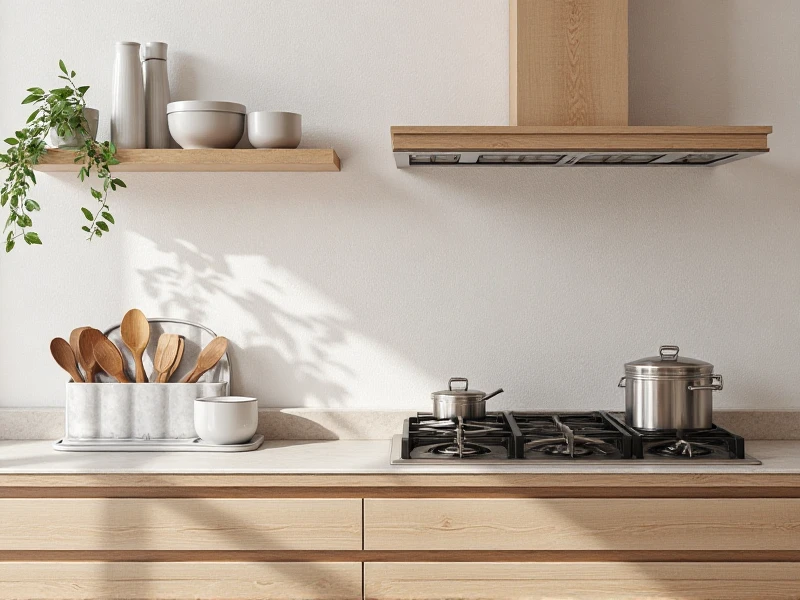The Ultimate Guide to Essential Kitchen Utensils: Types, Uses, and Maintenance
2025-06-06

Utensils transform raw ingredients into meals and turn cooking into a joy. Often overlooked, the right kitchen tools are fundamental to efficiency, safety, and culinary success. Understanding the vast world of utensils—from classic wooden spoons to modern silicone spatulas—can elevate your home cooking experience dramatically.
Why Quality Utensils Matter
Cheap utensils bend, melt, or scratch cherished cookware, creating frustration and expense. Investing in heat-resistant silicone, durable stainless steel, or responsibly sourced wood ensures longevity and performance. Non-toxic materials like food-grade silicone prevent chemical leaching into food during high-heat cooking, making safety paramount. Ergonomic handles reduce fatigue during meal prep, proving that thoughtful design impacts everyday tasks.
Essential Utensils for Every Kitchen
1. Spoons & Ladles: Slotted spoons drain liquids while serving solids—perfect for retrieving vegetables from broth. Solid versions work wonders for stirring sauces. Ladles with deep bowls simplify serving soups and stews.
2. Spatulas & Turners: Heat-resistant silicone spatulas scrape bowls clean, minimizing food waste. Flexible edges adapt to curve-sided pans. Metal turners (with or without slots) handle heavy foods like burgers, while nylon versions protect non-stick surfaces.
3. Tongs & Whisks: Spring-loaded tongs offer precise control for flipping meats or tossing salads. Balloon whisks incorporate air into eggs or batters; narrower versions excel at emulsifying vinaigrettes.
4. Specialty Tools: Don’t overlook potato mashers, garlic presses, or julienne peelers—niche utensils save time and enable culinary creativity. A spaghetti spoon with a center hook measures pasta portions effortlessly!
Choosing Materials: Pros & Cons
- Wood: Naturally non-scratch and aesthetically warm. Requires hand-washing and periodic oiling to prevent cracking. Avoid soaking.
- Silicone: Withstands extreme heat (up to 480°F/250°C), flexible, and dishwasher-safe. Ideal for non-stick cookware.
- Metal (Stainless Steel): Indestructible and hygienic. Opt for polished edges to prevent pan scratches. Great for searing and frying.
- Nylon: Lightweight and gentle on coatings. May warp if exposed to high broiler temperatures.
The Eco-Friendly Shift
Sustainable kitchenware is rising. Bamboo utensils are biodegradable and naturally antibacterial. Recycled stainless steel options reduce landfill waste. Brands now offer utensils combining recycled plastics with organic fibers, minimizing environmental impact without sacrificing durability.
Smart Storage Tips
Prevent drawer chaos with dedicated crocks, dividers, or wall-mounted racks. Hang frequently used spatulas or ladles near the stove for quick access. For drawer storage, group tools by function—stirring utensils together, serving tools together—to streamline cooking workflows.
Longevity Through Care
- Immediate Cleaning: Residue attracts bacteria and causes staining, especially on wood or bamboo.
- Gentle Methods: Avoid harsh scrubbers on non-stick coatings. Hand-wash wooden items.
- Season Wood: Apply food-safe mineral oil monthly to keep wood splinter-free.
- Check for Damage: Replace cracked silicone or chipped plastic to prevent accidents.
Transform Your Cooking
Quality utensils are the quiet champions of your kitchen. Whether browning a steak with sturdy tongs or folding batter with a flexible spatula, these tools bridge intention and outcome. They inspire creativity, ensure consistency, and make time spent cooking more enjoyable. For new cooks and seasoned chefs alike, refining your utensil collection pays lifelong dividends in flavor and joy. Start assessing your toolkit today—your next masterpiece meal awaits!
Category: